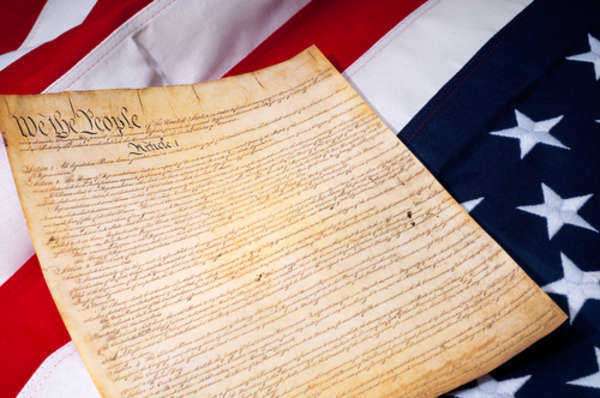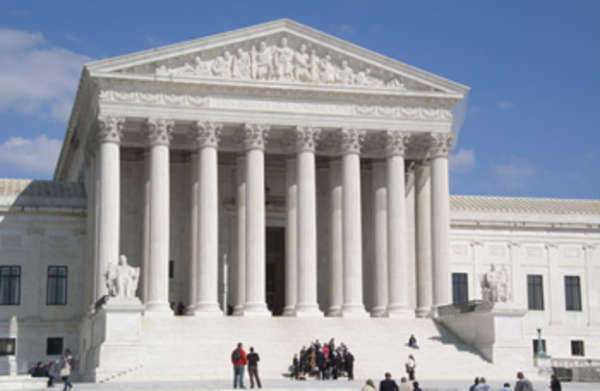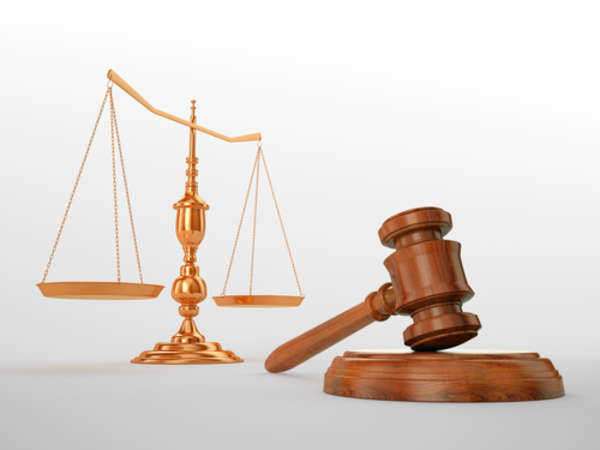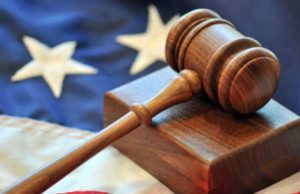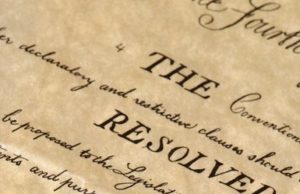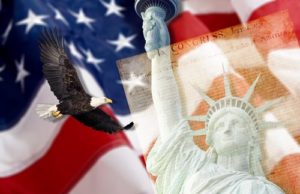Declaration of Independence Overview

The Declaration of Independence is one of the most significant documents in American history, marking the birth of a new nation and a new way of life. It was written by Thomas Jefferson, one of the founding fathers of the United States, and adopted by the Continental Congress on July 4, 1776. Its purpose was to announce to the world the colonies’ intention to break away from British rule and establish an independent nation.
The Declaration of Independence, or simply the Declaration, is a remarkable document in many ways. It is concise, powerful, and eloquent, expressing the ideals of freedom, equality, and democracy in a way that still resonates with people today. It is also a fascinating historical artifact that tells us a lot about the era in which it was written, the people who wrote it, and the events that led up to its creation.
In this article, we will explore the history, meaning, and significance of the Declaration of Independence, looking at its origins, contents, and impact. We will begin by discussing the context in which the document was written, examining the events leading up to the American Revolution and the reasons why the colonists decided to declare independence from Great Britain.
Origins of the Declaration of Independence
The American colonies had been under British rule for more than 150 years before the Declaration of Independence was written. During that time, they had enjoyed a certain degree of self-government and autonomy, but they were ultimately subject to the authority of the British Crown and Parliament. This situation began to change in the mid-18th century, as tensions between the colonies and Great Britain began to rise.
There were several factors that contributed to this tension. One was a series of new laws and taxes passed by the British government that the colonists viewed as unfair and unjust. For example, in 1765, the British Parliament passed the Stamp Act, which imposed a tax on all legal documents, newspapers, and other printed materials in the colonies. This was followed by other taxes, such as the Townshend Acts, which levied import duties on a variety of goods and commodities.
The colonists were also angry about their lack of representation in the British Parliament. They believed that they were being taxed without their consent, and that their voices were not being heard in the halls of power. This sense of political disenfranchisement was compounded by the actions of the British military, which stationed troops in the colonies and often used force to enforce unpopular laws and policies.
To protest these injustices, the colonists began to organize and mobilize. They formed groups like the Sons of Liberty, which staged protests and demonstrations, and the Committees of Correspondence, which helped to coordinate resistance movements across the colonies. Their efforts were met with increasing resistance from the British government, which saw the colonists’ actions as seditious and treasonous.
The tensions between the colonies and Great Britain came to a head in 1773, with the Boston Tea Party. In this incident, a group of colonists disguised as Native Americans boarded a British ship and dumped its cargo of tea into Boston Harbor, in protest against the Tea Act of 1773. This act of civil disobedience was met with a harsh response from the British government, which passed a series of repressive measures known as the Coercive Acts, or Intolerable Acts, in 1774.
These measures included the closure of Boston Harbor, the suspension of Massachusetts’ charter, and the quartering of British troops in private homes. They were intended to bring the colonies to heel, but instead they had the opposite effect. The colonists became more radicalized and more determined to resist British rule. They began to call for independence, and the idea of breaking away from Great Britain began to gain traction.
The Writing of the Declaration of Independence
The idea of declaring independence from Great Britain was not a new one, but it was a controversial one. Many of the colonial leaders were still hesitant to take such a drastic step, fearing that it would lead to further violence and chaos. However, by the spring of 1776, the tide had turned, and the idea of independence was gaining support.
The Continental Congress, which had been meeting in Philadelphia since 1775, began to debate the issue of independence in earnest. A committee was formed to draft a statement declaring the colonies’ intentions, and the task of writing the document fell to Thomas Jefferson, a young lawyer and politician from Virginia.
Jefferson was a brilliant and accomplished writer, and he was well-versed in the principles of freedom and democracy. He had already written extensively on the topic of colonial rights and had helped to draft the Virginia Declaration of Rights, which was adopted by the Virginia Assembly in 1776. He was therefore well-suited to the task of writing the Declaration of Independence.
Jefferson worked on the document for several weeks, drafting multiple versions and seeking input and feedback from his fellow committee members. He drew inspiration from a variety of sources, including the works of philosophers like John Locke and Jean-Jacques Rousseau, and from his own experience as a colonial leader.
The final version of the document, which was adopted by the Continental Congress on July 4, 1776, was a masterpiece of rhetoric and persuasion. It began with a powerful statement of purpose, declaring that “when in the course of human events it becomes necessary for one people to dissolve the political bands which have connected them with another, and to assume among the powers of the earth, the separate and equal station to which the laws of nature and of nature’s God entitle them…”
From there, Jefferson went on to list a series of grievances against the British Crown, including the imposition of taxes without representation, the quartering of troops in private homes, and the suspension of colonial charters and legislatures. He also detailed the colonists’ efforts to seek redress of these grievances, which had been rebuffed by the British government.
Finally, Jefferson asserted that “these United Colonies are, and of right ought to be free and independent states, that they are absolved from all allegiance to the British Crown, and that all political connection between them and the state of Great Britain is, and ought to be, totally dissolved…” This bold statement marked the birth of a new nation, and set the course for a long and bloody struggle for independence.
The Significance of the Declaration of Independence
The Declaration of Independence was more than just a statement of purpose or a list of grievances. It was a revolutionary document that laid out a new vision of governance and civic life. It asserted the rights of individuals to life, liberty, and the pursuit of happiness, and it declared that governments derive their power from the people they serve, rather than from divine right or inherited privilege.
In this sense, the Declaration was a radical document, articulating a set of ideals that had never been expressed so clearly before. It laid the groundwork for a new kind of government, one based on the consent of the governed and the protection of individual rights. It was a declaration of freedom, equality, and democracy, and it inspired generations of Americans to fight for those principles.
The Declaration of Independence was also a unifying force for the American colonies. It helped to galvanize public opinion in favor of independence, and it rallied the colonists behind a common cause. It provided a sense of purpose and identity for a disparate group of colonies, helping them to see themselves as a single nation rather than a collection of separate states.
Furthermore, the Declaration of Independence had a profound impact on the world at large. It inspired other nations to fight for their freedom and for the principles of democracy and human rights. It helped to set the stage for a new era of global politics, one in which nations would be judged by their respect for individual liberty and democratic principles.
Conclusion
The Declaration of Independence is a remarkable document, one that continues to inspire and inform people today. Its message of freedom, equality, and democracy is timeless, and its impact on the world cannot be overstated. As we celebrate the Fourth of July, it is important to remember the spirit of independence that inspired the document, and to rededicate ourselves to the principles it represents. Freedom is not a given, but a constant struggle, one that requires vigilance, courage, and dedication. The Declaration of Independence reminds us of that struggle, and provides us with the inspiration to carry it forward.
Background
The Declaration of Independence was authored in 1776 by Thomas Jefferson, with the help of fellow political leaders, such as John Adams and Benjamin Franklin. Ratified on July 4th, 1776, the Declaration of Independence became the first political doctrine of its kind, advocating for a governing body whose purpose was to serve the citizens that it represented – a contrast of the British monarchy under which the citizens of the United States had been subject prior to the Revolutionary War.
Furthermore, the doctrine diagrammed a central government whose power resulted from the consent of its citizens to be governed. The Declaration of Independence established the newly-formed United States of America as a sovereign nation, cutting all ties – both political and gubernatorial – with the British monarchy. The text of the Declaration of Independence not only confirmed the autonomy of the United States of America but also outlined the various transgressions committed by the British monarchy under King George III.
Lack of Governmental Power
Thomas Jefferson credited political philosopher John Locke with much of the inspiration for a democratic ideology that he had implemented in his authorship of the Declaration of Independence. Thomas Jefferson had been particularly moved by Locke’s notion of a just governing body. Locke stated that every citizen would be entitled to inherent rights and liberties that could not be removed by any governmental body. In addition, Locke stated that the citizens grant their respective government permission to govern them, and as a result, the true power is in the possession of those citizens, rather than any governing body.
Thomas Jefferson took Locke’s notion a step further by laying the groundwork for a system of checks and balances, in which a central government is split into separate factions, thus preventing totalitarian rule. The separate branches of government would be required to work in tandem in order to act.
Implications and Image for The Constitution
In 1776, the Declaration of Independence was approved by all of the 13 states of the newly-formed United States of America, and the implications of the doctrine were apparent. Not only was the United States establishing its sovereignty as an autonomous nation, but the authors of the Declaration of Independence cited what they believed to be fundamental flaws and inefficiencies of the British monarchy under King George III.
By doing so, they allowed for a contrast between a totalitarian ruling body operating with absolute power and an elected central government; a government that would be required to act as a public servant, protecting the interests and rights of its citizens. In addition, as a sign of diplomatic faith, the Declaration of Independence not only demanded the release of all British prisoners being held captive in the United States, but a return of all British loyalist property unjustly seized subsequent to the end of the Revolutionary War.
General Message and Authorship
The Declaration of Independence not only illustrated the contempt for totalitarian, monarchical rule on the part of political figureheads such as Thomas Jefferson, John Adams, and Benjamin Franklin but also elucidated what they considered to be the fundamental flaws of a tyrannical infrastructure that utilized absolute power in order to maintain dominance over its subjects. The Declaration of Independence expresses a clear philosophical message that highlights the incorporation of humanism in the development of the ideal creed to which a democratic central government would adhere.
The authors of the Declaration of Independence placed their respective faith and trust in both the ability as well as the judgment of the citizens of the United States, both present and future. By allowing the citizens of the United States the opportunity to not only elect their governing body but also the opportunity to choose to be governed by that elected body, some political philosophers consider the Declaration of Independence to be a prototype for humanistic political theory.







